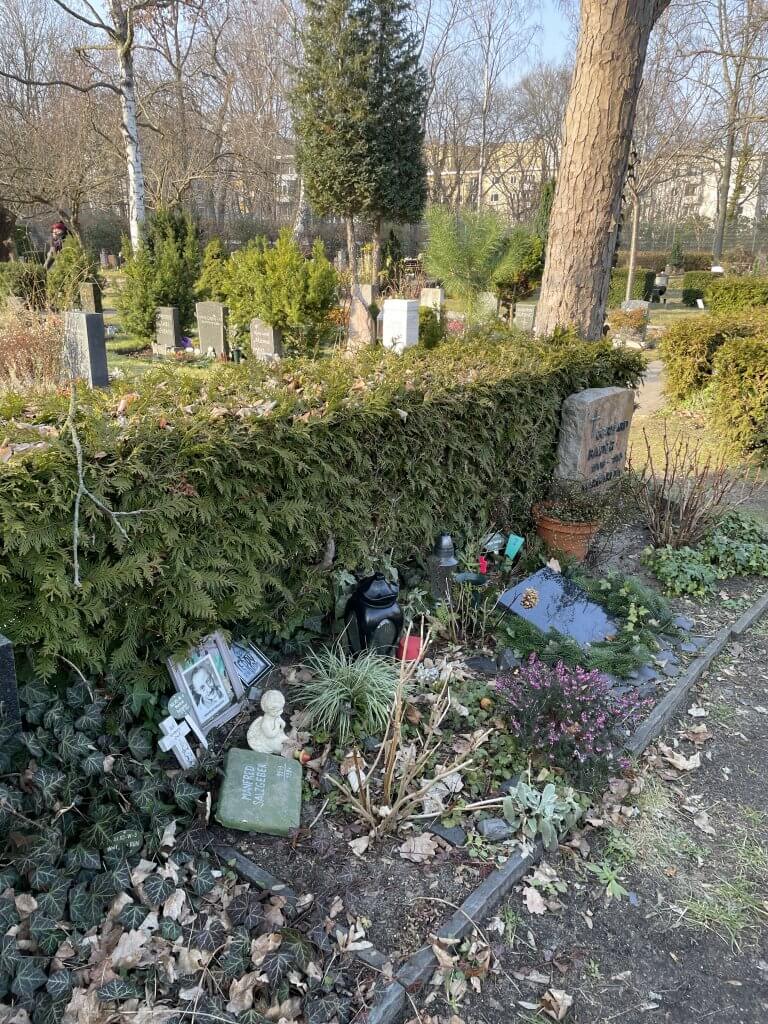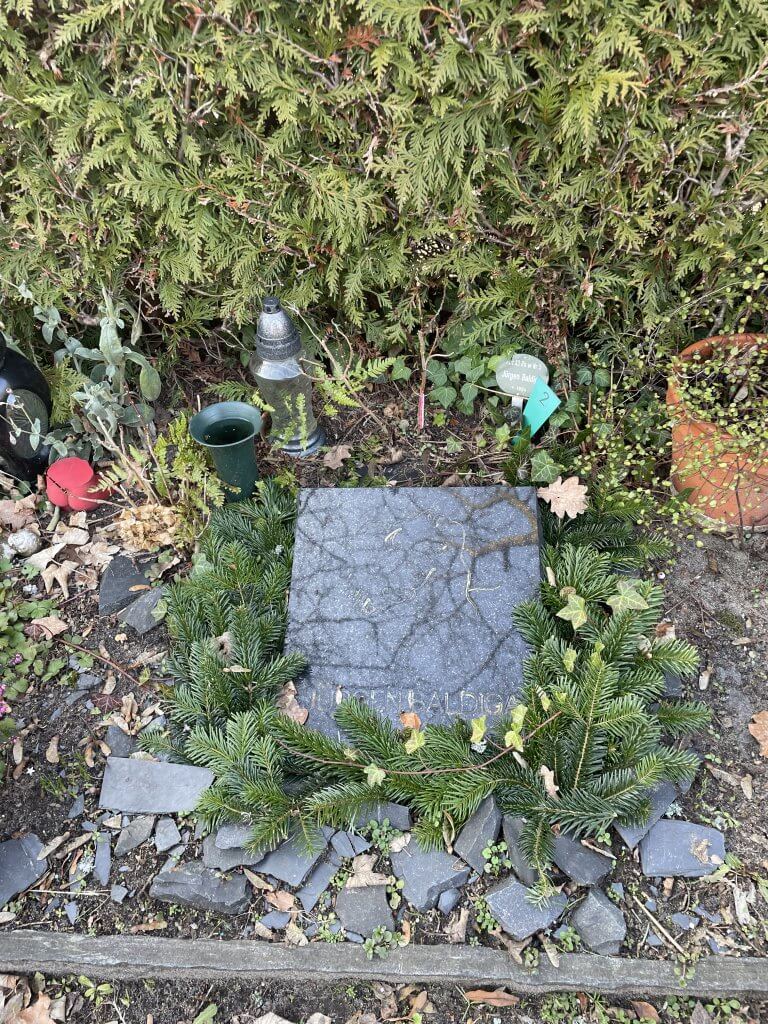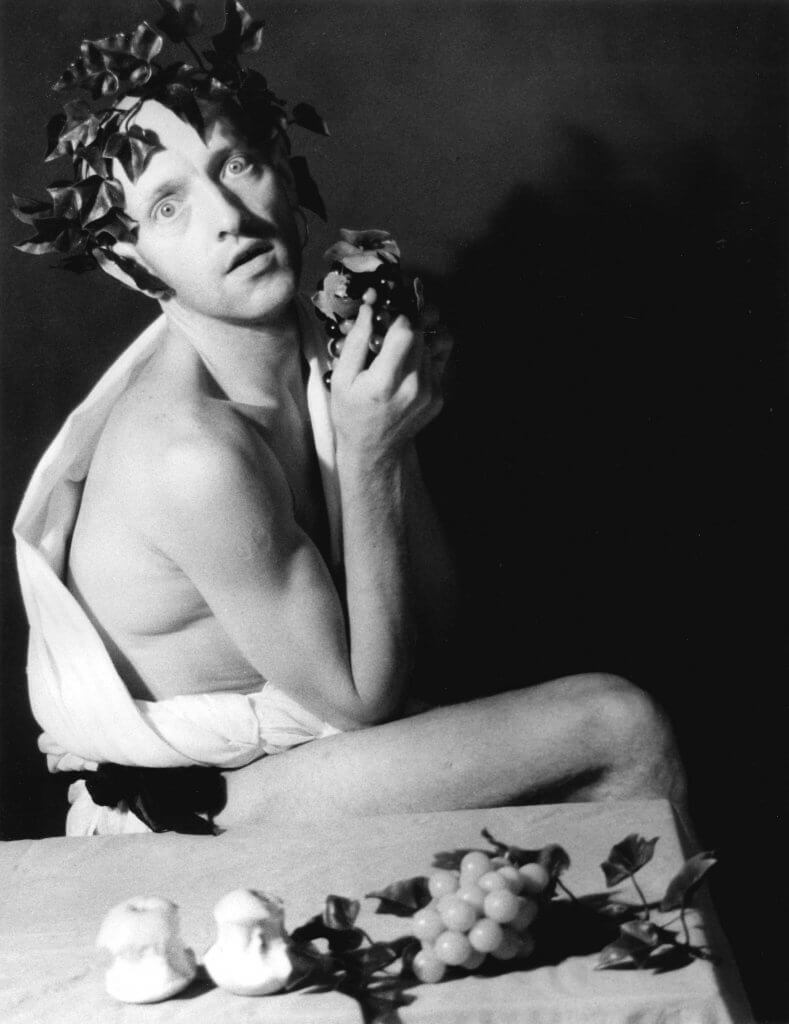Jürgen Baldiga (1959-1993)
51 - Grave Jürgen Baldiga, cemetery Alter St. Matthäus Kirchhof
Section X3 - Row W, Grave 5, Kolonnenstr. 24-25, Berlin-Schöneberg
unfortunately the audio contribution is not ready yet 🙁 but will be soon 🙂
Jürgen Baldiga was an important gay artist and photographer who documented queer life in West Berlin in the 1980s and early 1990s like no other. At around the same time as Baldiga learned of his HIV infection, he also began to take photographs. Baldiga became the most important chronicler of the West Berlin gay scene and drag culture. He lived a wild, too-short life, which ended in 1993 due to his Aids infection.
read more
(this text can also be heard in the audio clip)
Baldiga grew up as a miner’s son in Essen and moved to West Berlin in 1979 at the age of 19, where he initially earned his living as a cook and hustler. However, he soon discovered his calling: art and, in particular, photography as a chronicler of the Berlin gay scene. He lived an unreservedly sex-positive life before the term existed, was full of energy and a stage hog. “I want to live. Enjoy every day. It’s fun, it makes horny, it’s the freedom of sexuality”. In his diary he noted “Art and fucking – that’s my life. I love my life. It’s like a trip. An eternal one.”
His art was radical and his photographs show an unembellished, authentic image of the queer underground, full of honesty with himself and others. With his camera, he captured moments that others often overlooked: wild parties, intimate encounters, but also the darker side of life on the edges of society.
At first he was reserved and only photographed feet because he did not dare to meet people more intimately. But then he began talking to people on the street. Junkies, hustlers, people with disabilities, drag queens. He chatted them up and met them all at eye level, portraying them with a special directness, closeness and warmth.
Baldiga was particularly fascinated by the so-called “Schwuz-Tunten” – drag queens and gender-nonconforming people who confidently staged themselves, such as Melitta Sundström and Pepsi Boston. At that time, the SchwuZ club was located in the rear building at Hasenheide 54, which is now the Höfe am Südstern. His portraits, photographed from 1987 onwards, are full of respect and affection, they show “people who confidently understood and staged themselves as queers, with wigs and costume jewelry from the old clothes collection and an eye shadow and self-confidence to kneel down”.
At the end of 1984, Baldiga found out that he was HIV-positive. At a time when an HIV infection was still considered a death sentence, he began to document his life and his changing body with even greater intensity. His works from this period are ruthlessly honest and show both the desperation and the irrepressible will to live that drove him. In order to document himself and his HIV disease, he asked photographer Aaron Neubert to photograph him once a month until his death. This photo series “Warmth that only fire can give us” is available digitally (see link below)
Baldiga became an important activist in the fight against Aids and the associated stigmatization. He was involved in self-help groups and used his art to draw attention to the situation of HIV-positive people.
On December 4, 1993, at the age of just 34, Baldiga took his own life, exhausted by his illness. For his obituary, he himself chose a photo showing him with bloodshot eyes and a red clown’s nose – a final, powerful statement by an artist who wanted to retain control over his image and his story until the very end.
Baldiga’s artistic work was wide-ranging. In addition to 4 illustrated books and 5,000 photographs, he also left behind Super 8 films, music recordings and, above all, 40 volumes of diary entries, transcribed into over 7,000 PDF pages. These diaries provide an intimate insight into his life and Berlin’s queer scene.
Baldiga’s estate is part of the archive of the Schwules Museum Berlin. His photographs are displayed on the walls of SchwuZ, one of Berlin’s oldest queer clubs, which Baldiga often visited and documented.
In 2019 and 2024, two documentary films were made, “Rescue the Fire!” and “Baldiga – Unlocked Heart”, which make his life and work accessible to a wider audience.
Jürgen Baldiga’s grave in the Alter St.-Matthäus-Kirchhof churchyard in Berlin-Schöneberg is now a place of queer remembrance for the victims of the Aids pandemic.
Other places with Jürgen Baldiga
71 - former SchwuZ 1987-1995, location of the SchwuZ-Tunten
80 - SchwuZ, where Baldiga is exhibited, Rollbergstr. 26
Image gallery Jürgen Baldiga






Further places & audio contributions
Further audio contributions nearby:
Related links & sources:
- Photo series “Warmth, which only fire can give” by Aron Neubert, 27 pictures, one per month until his death
- Online exhibition with photographs by Jürgen Baldiga http://www.baldiga.com/galerie.htm
- [in German with English subtitles] Documentary film “Baldiga – Unlocked Heart” by Markus Stein, 2024
- [in German, with English subtitles] Documentary film “Rescue the fire!” by Jasco Viefhues, 2019 also available in the libraries of Berlin
- [in German] Video interview about the documentary film “Baldiga – Unlocked Heart” with Markus Stein
Note on terminology:
Some of the terms used in the texts are used as they were common at the time of the queer heroes, such as the word “transvestite”, which was chosen as a self-designation by some people. Today, we would express this in a much more differentiated way, including as trans*, crossdresser, draq king, draq queen, gender-nonconforming or non-binary. Where possible, the terms that the person (presumably) chose for themselves are used, but in some cases we do not know how the people described themselves or how they would describe themselves using today’s vocabulary.
In addition, the word “queer” is also used, which did not even exist at the time of most of the queer heroes described. Nevertheless, today it is the most appropriate word to describe inclusively all those who do not correspond to the heterosexual cis majority.
A project by Rafael Nasemann affiliated to the Magnus-Hirschfeld-Gesellschaft e.V., Berlin.
Funded by the Hannchen-Mehrzweck-Stiftung – Stiftung für queere Bewegungen

The map on this site was created using the WP Go Maps Plugin https://wpgmaps.com, thanks for the a free licence
© 2025 – Rafael Nasemann, all rights reserved

